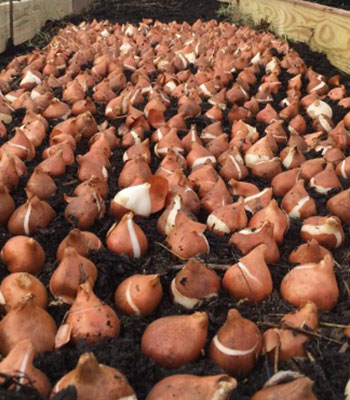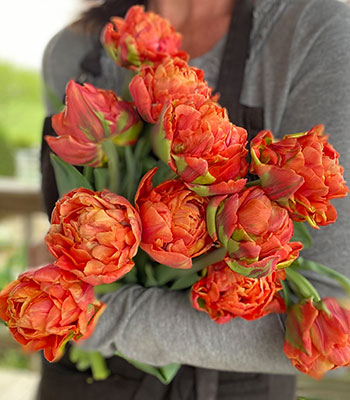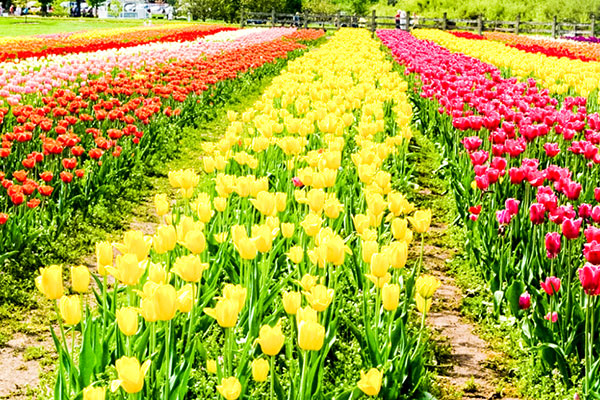For most flower farmers around the world, the season for harvesting tulips will soon come to an end. The harvesting method flower farmers use depends on how they grew their tulips and how they plan to use the flowers in floral arrangements.
Tulips can be harvested by cutting stems at the base and leaving the bulbs in the ground, or by lifting each tulip—bulb and all—from the soil bed. There are advantages and disadvantages to both harvesting methods. Before planting tulips at your flower farm, you should consider how you want to use them in your floral-design work. In turn, that decision will help you decide the best way to plant and grow your tulips.
Growing tulips to harvest by lifting has many advantages for the flower farmer. You have longer stems to work with in your floral designs, the blooms have a longer vase life, and the flowers can be stored in a cooler for a longer period of time than cut tulips.
If you plan to grow tulips for lifting, I recommend planting the bulbs in raised beds. This makes them easier to harvest, which is something I’ve learned through trial and error.

Because of limited space here at the farm, I usually lift tulips. No matter how many acres or square footage a farm has, there never seems to be enough room to grow all the flowers desired. By lifting tulips, I can make room for other flowers.
Harvesting tulips by cutting at the base may be easier, but you often wind up with very short stems. That poses quite a challenge when trying to create large arrangements, whimsical designs or wedding bouquets.
At my farm, the tulips I plan to harvest by cutting are scattered throughout the main gardens. They provide beautiful color until I need them for bouquets. I let these tulip bulbs stay in the ground for another season. However, I’ve noticed that tulip quality diminishes when bulbs are left in the ground year after year.
It’s up to you how you grow and harvest tulips—you decide what’s best for your flower farm. Just be sure to consider how you plan to use them in your fresh-flower arrangements. And make your decisions early in the planting season so you can be confident that your chosen harvesting method will produce superb results. Remember: Journaling helps keep gardening mishaps at a minimum. Use your journal to record varieties added or dropped, growing conditions and other helpful information.

It’s time to be thinking about next season’s tulip varieties, and if you’re planning a large planting, consider buying bulk tulip bulbs for a budget-friendly option. With the exception of a few favorites, I typically change the tulip varieties I grow each year. Sometimes, I drop or add a certain color or variety depending on responses from my customer base or the expectations of bridal clients seeking a unique look with early, midseason or late blooming tulips. The time to order is just around the corner, so order early to make sure you get the selections you want.
Happy Gardening!
Pamela Anthony
Beehind Thyme Farm & Garden

